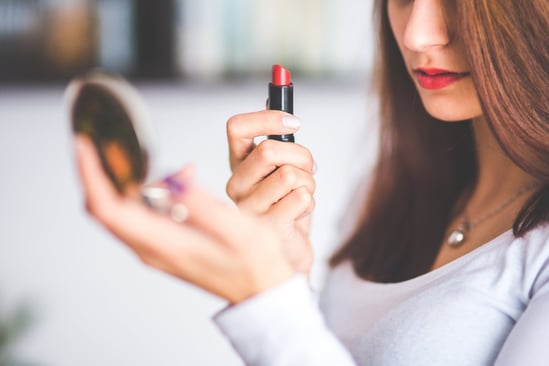Ecommerce Challenges for Beauty Retailers | Salsify

Today’s beauty industry emerged from diverse roots. And, while a few major beauty brands rose to the top and solidified their control through traditional advertising channels, these same established brands are now facing new pressures from fresh competitors.

Image source: Pexels
The new competition operates with startling swiftness and agility to serve a consumer who expects new standards of convenience and clarity in the supply chain. As a result, traditional beauty brands must adapt or risk losing significant market share in their categories.
What are the main issues brands should be concerned about and what can they do now to start combatting this market share disparity?
Beauty brands face significant challenges
You might be wondering, if consumers continue to buy, why should established brands be concerned about ecommerce share and digital commerce? Here are some of the challenges that beauty brands are actively facing in today’s modern commerce environment:
Rise of private label brands
Many online retailers like Amazon, Walmart, Target, Walgreens, and CVS have launched their own label of beauty products. Their products are usually highly comparable to those of traditional beauty brands in price, quality, and ease of access.
Subscription services
Another growing trend in the market is the use of subscription services, like GLOSSYBOX or Ipsy, that eliminate the challenge of brick and mortar shopping by establishing routine shipments of necessary beauty items online. This eliminates the need for consumers to “shop” for products by increasing the reordering of products they already use.
Digitally Native Vertical Brands (DNVBs)
DNVBs are highly specialized companies that sell products to a specific target audience. They typically start out with no physical retailing space, but that’s not to say that physical retail can’t play a role in their strategy. They’re gaining popularity and market share quickly. It’s estimated that web-only brands grew three times faster than total U.S. ecommerce, which means that traditional beauty brands need to be prepared to compete with these brands in all arenas, but especially online.
Some beauty DNVBs to look out for are baby, beauty, and household products from The Honest Company and online beauty brand Glossier. Brands like these are usually seen as honest, responsible and friendly, as well as cost-saving due to their D2C model which eliminates the middle-man markups that most traditional beauty brands have experienced since their rise.
Additionally, these brands are getting support from venture capitalists, which only indicates their increasing and continued influence on market trends and consumer behaviors.
What’s next for beauty brands?
While big changes are hard, there are some key themes to keep in mind that can help guide any organization forward.
Who is your target audience? Figure out who they are, and embrace them as the loyal, lifelong customer you expect them to be.
Gain their trust and keep it by continually striving to create products and experiences that demonstrate your authentic commitment to serving them. Use every opportunity to reinforce this mission through your design and messaging on your brand website, social media channels, and wherever else you appear.
Achieve visibility. Search results (both organic and paid).
Constantly refresh your product detail page to always reflect the best your product has to offer throughout the year. This may include new versions of the product, seasonal changes, or trying bundles and other offers.
Constantly measure your performance and respond. Beauty brands need to experiment within the market to establish the correct strategy or risk losing market share. Once products are at the top of a category, they are constantly rewarded with better search performance and conversions, but falling to the bottom means that products quickly cease to have relevance.
Tag(s):
Omnichannel Commerce Strategy
Written by: Jonathan Herman
Recent Posts
Ecommerce Technology
|
7 minute read
Bridge the Product Information Gap: How a Digital Catalog Ensures Every Stakeholder Is on the Same Page
Read More
Artificial Intelligence
|
11 minute read
AI in Product Information Management (PIM): Cut Through the Hype To Find Real Revenue Impact
Read More
Shopping Events and Holidays
|
6 minute read
Beyond Amazon: Multichannel Sales Strategies for Prime Day Alternative Sales
Read More
Subscribe to the Below the Fold Newsletter
Standing out on the digital shelf starts with access to the latest industry content. Subscribe to Below the Fold, our monthly content newsletter, and join other commerce leaders.

.svg)